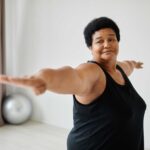
08 Dec What is Thoracic Outlet Syndrome (TOS)?
What is Thoracic Outlet Syndrome?
Thoracic Outlet Syndrome (TOS) refers to a collection of conditions that result in nerve or blood vessel stress in the neck, shoulder and arm. Symptoms commonly include arm or hand numbness, coldness, tingling, or discoloration. You may be referred to physical therapy after your physician determines that relieving stress on the nerves and blood vessels causing TOS can improve your symptoms.
Examination by Physical Therapist
Information regarding your general health as well as your neck, shoulder, and arm symptoms will be gathered by your physical therapist. During the evaluation, your physical therapist will examine your posture, the movement of your neck, shoulder and upper back, your flexibility and strength, and test for evidence of specific nerve or blood vessel irritability or distress. With your input, an individualized treatment plan will then be developed.
What are the goals of physical therapy care for patients with TOS?
The goals of physical therapy treatment include first decreasing symptoms of pain and decreasing/eliminating arm or hand numbness, tingling, or coldness. Ultimately, physical therapy seeks to eliminate the root cause of your condition by restoring normal posture, improving muscle length and strength, increasing movement, and of course returning you comfortably to your highest level of desired activity. On average, most treatment plans last 2-3 months but can last longer based on your goals and response to therapy.
How will my physical therapist aid in my recovery?
- By providing education on proper posture, breathing techniques, and ways to reduce stress to the neck, shoulder, and arm.
- By using taping, selected modalities, gentle manual therapy or dry needling to decrease pain.
- By using manual therapy and exercise to restore normal movement to the neck, shoulder, and upper back, including gentle nerve gliding.
- By prescribing and monitoring exercises to increase the endurance, strength, and muscle control of neck, upper back, and shoulder muscles.




